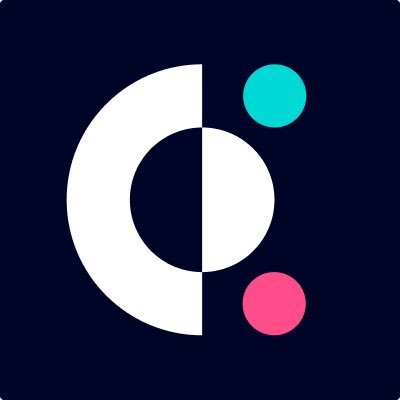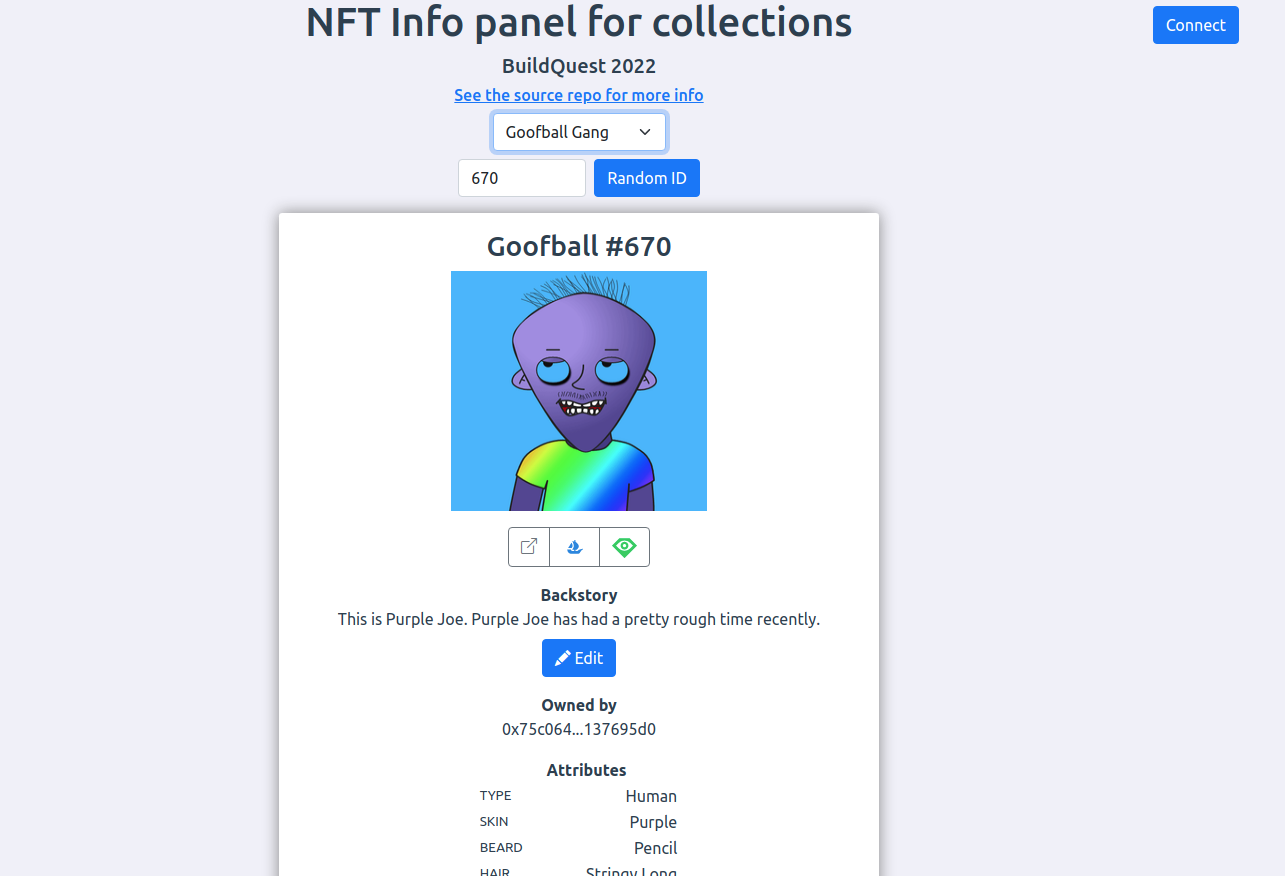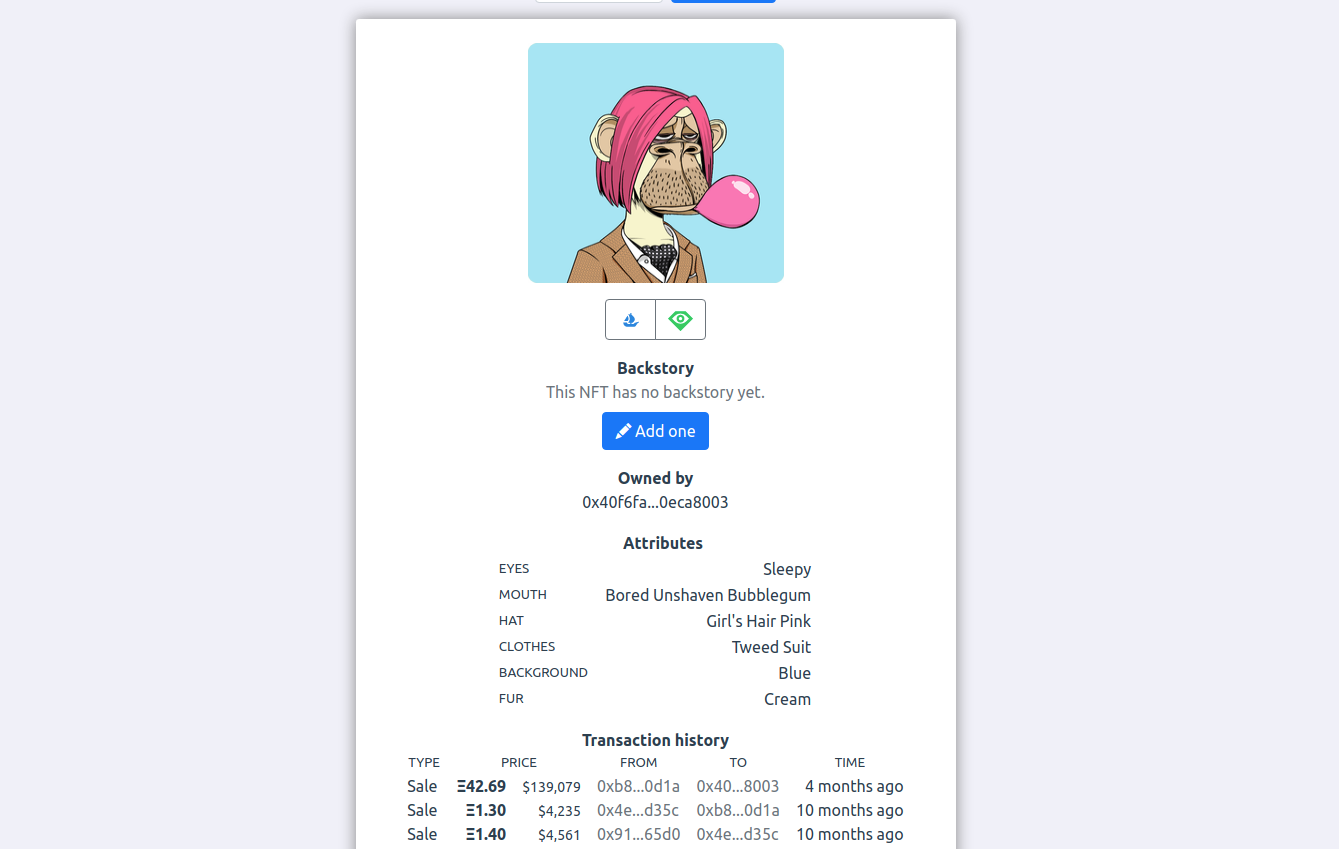NFT Info panel
An easy way to create customizable pages about NFTs so that NFT project creators and the community can show what's important and add functionality.
NFT Info panel
Created At
Winner of

🏊♂️ NFTPort - Pool Prize

🏊♀️ Tableland - Prize Pool

🏊♀️ Sequence Pool Prize

🏊♀️ Covalent - Pool Prize
Project Description
NFT project sites frequently contain a roadmap and news, but usually lack the full inventory of NFTs in the collection. The full inventory is usually only available on third-party websites (for instance marketplaces like opensea or blockchain sites like etherscan). NFT project creators and communities can't influence the information that is shown or the functionality that is provided.
NFT Info is an easily embeddable frontend panel that project creators can use to create their own customizable NFT pages. The panel shows the essential NFT information like the image, current owner and trading history. It also allows NFT owners to add additional off-chain information to the NFT, like a 'backstory'.
Many future add-ons are possible:
-
Users could annotate their own purchases and sales
-
NFT owners could pin more content next to their NFT ("check out this high-quality print above my desk")
-
a metaverse NFT project could show the current whereabouts of their NFTs in the metaverse
-
a game NFT project could show the current scores or capabilities of each NFT character
NFT Info is embeddable and extensible so that NFT projects can customize where needed.
How it's Made
The frontend is a Vue app that collects data (image, owner, attributes, transaction history) about the NFT it's showing from two APIs (covalent and nftport).
A user can sign in with Metamask or Sequence wallet and if they're the owner of the NFT, they can update the off-chain stored 'backstory' field. The backstory data is stored in IPFS blobs, and the mapping of the NFT token to IPFS hash is stored in a Tableland table. At this moment, there's a backend server (running on Vercel) that verifies that the signature matches the NFT owner's. When Tableland supports per-row access in the future, it might be possible to remove this centralized component.



